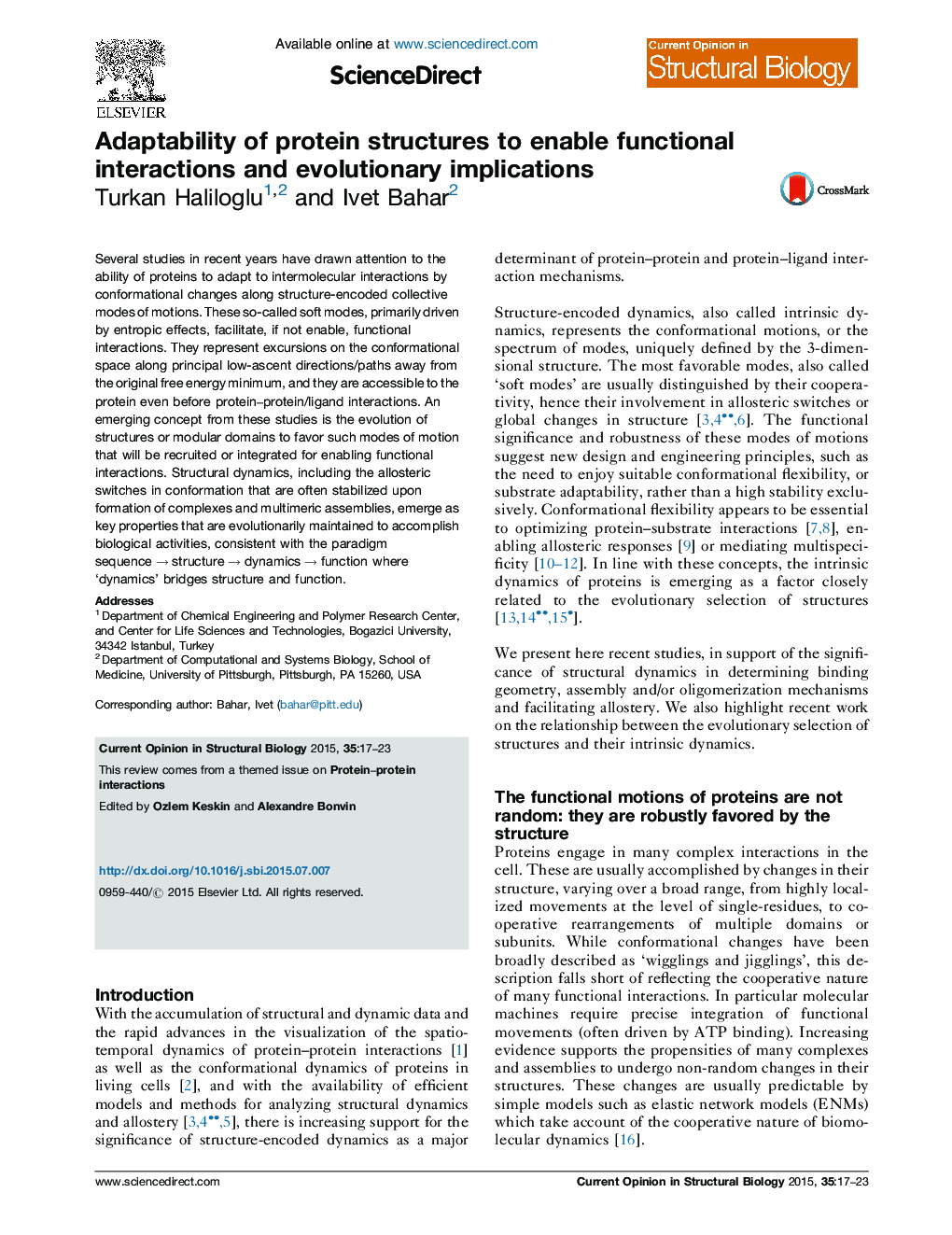| Article ID | Journal | Published Year | Pages | File Type |
|---|---|---|---|---|
| 8319826 | Current Opinion in Structural Biology | 2015 | 7 Pages |
Abstract
Several studies in recent years have drawn attention to the ability of proteins to adapt to intermolecular interactions by conformational changes along structure-encoded collective modes of motions. These so-called soft modes, primarily driven by entropic effects, facilitate, if not enable, functional interactions. They represent excursions on the conformational space along principal low-ascent directions/paths away from the original free energy minimum, and they are accessible to the protein even before protein-protein/ligand interactions. An emerging concept from these studies is the evolution of structures or modular domains to favor such modes of motion that will be recruited or integrated for enabling functional interactions. Structural dynamics, including the allosteric switches in conformation that are often stabilized upon formation of complexes and multimeric assemblies, emerge as key properties that are evolutionarily maintained to accomplish biological activities, consistent with the paradigm sequence â structure â dynamics â function where 'dynamics' bridges structure and function.
Related Topics
Life Sciences
Biochemistry, Genetics and Molecular Biology
Biochemistry
Authors
Turkan Haliloglu, Ivet Bahar,
